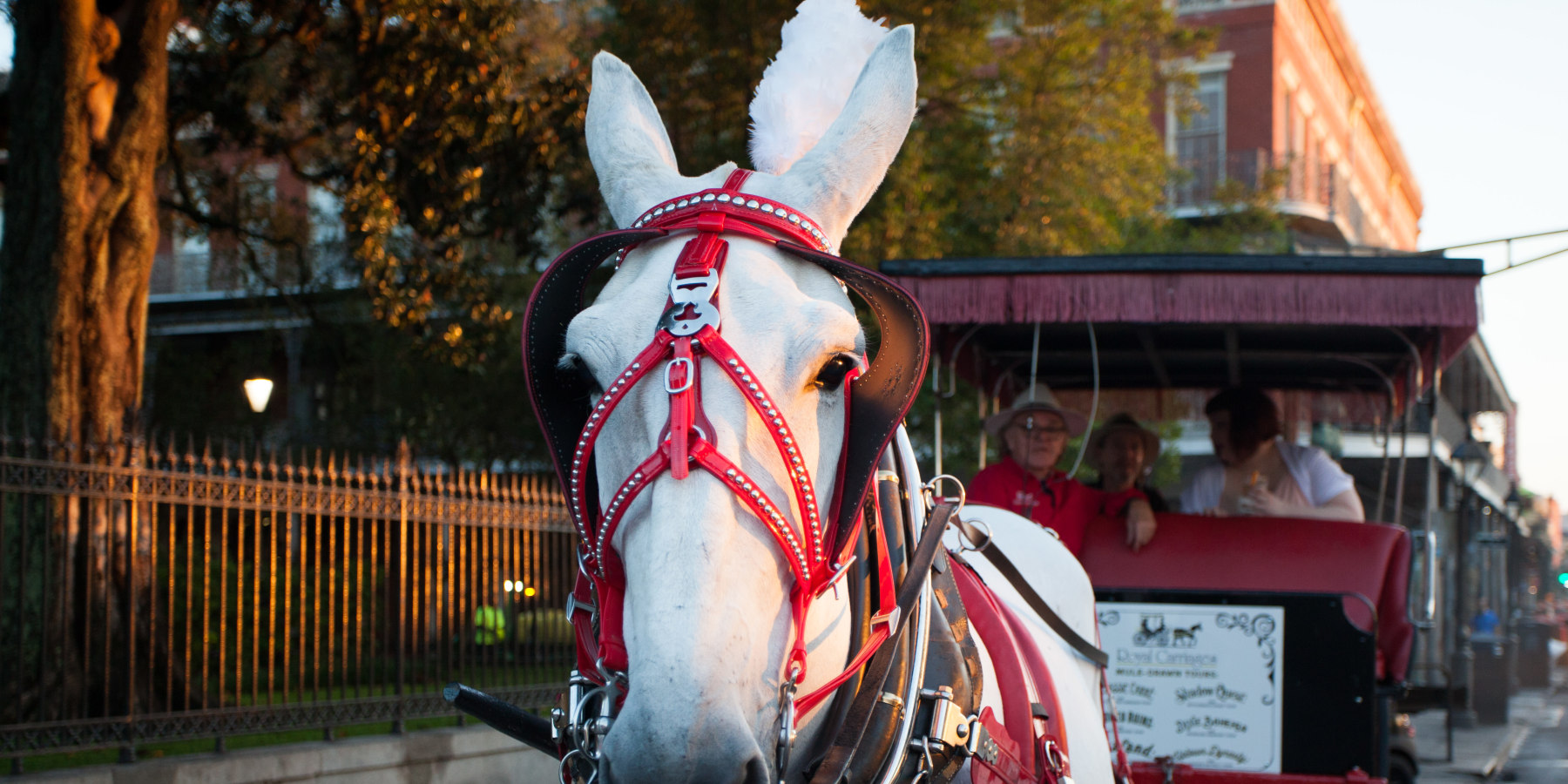
All the day and night, when the carriages are lined up at Jackson Square waiting for riders, the drivers frequently hear passerbys argue whether or not the animals pulling the carriages are horses or donkeys. Most are incredibly shocked to hear that the animals are neither horses or donkeys, but a blend of both animals. Most people have no idea that mules even exist, which is CRAZY, because they are so significant in human history!
What is a Mule?
A mule is an offspring of a donkey and a horse (strictly, a male donkey and a female horse), and are typically sterile. The only way Mules exist is because people began breeding these two species together ages ago, but why?
Why Mules?
As it turns out, mules are actually one of the hardiest animals on the Earth, known to be smarter, stronger, and more surefooted that their horse-counterpart. That in itself is amazing! Don’t you agree?
Mules also have much thicker skin and denser muscles than either of their parents, meaning they are largely unaffected by biting or stinging insects!
Mules can out-perform both of their parent in almost every field that makes them useful! One specific category that mules won’t exceed in though is speed.
Mules are extremely well-adapted for desert travel! We can thank their desert-dwelling donkey fathers for this one! They are more resistant to extreme temperatures and can survive far longer without a drink than either parent animal. Mules are very much like the camels of the equine world in many ways!
Mule-Drawn Carriages in New Orleans
Royal Carriages in New Orleans, Louisiana began in 1941 by getting mules and horses to mate for the first 30-years. In the 1970’s, Mr. Jimmy Lauga visited The Reese Brothers at their farm in Gallatin, Tennessee. Mr. Lauga was more than impressed with the quality and care of these extremely large Belgium draft mules. He soon replaced his entire herd with mules instead of horses, and it’s been that way ever since!
Years later in the 1980’s, Mr. Lauga and Dr. Beirhman DVM worked with the City of New Orleans to establish the current laws and regulations regarding the commercial carriage industry that are still in effect to this day. Together, they fought for the use of mules over horses, and to this day, all of the various animal-drawn carriages that you see in the French Quarter are all pulled by these amazing hybrid animals!!
A Day in the Life of a Carriage Mule
Early in the morning, before the sun rises over the city, our stable crew is hard at work making sure the mules receive their feed on time each day! It’s a fun thing to experience, seeing these mules run around in circles as they are just excited as pet dogs are to eat! The mules are given ample time to eat their fill and digest their food before the carriage drivers arrive hours later. Once the carriage drivers arrive, each driver retrieves it’s mule, providing that mule a nice soapy bubble bath. Bathtime and grooming provide the mule and the driver the opportunity to bond with one another prior to their day of work. After a driver has harnessed it’s mule, staff members assist one another with putting the mule to the carriage, and then the driver and mule are off to work! In New Orleans, an average shift is about 7 hours long.
Throughout the 7-hour shift, carriage drivers and mules do an average of 2-5 hours of actual tours, totaling anywhere between 8-15 miles of moderate exercise and. Mules also work NO MORE than 5 days each week, and absolutely cannot work a night shift followed by a day shift! These are examples of our city regulations which we are more than grateful for. At Royal Carriages, our mules work in the city between 6-9 months each year, receiving an immediate 3-6 months of pasture vacation. This rotation provides mules a lot of time to enjoy both work and muleling around!
After 7 hours out of the stable, the mule-drawn carriages return to the stable, where other mules and drivers are ready to begin their night! Worked mules are rinsed and brought back to their large box stalls where both hay and grain are waiting for them! No matter how hard these giants work, they always skip the water and head straight for that sweet feed! Some of them like to roll around, covering themselves with dirt and shavings immediately after work! This is typical mule behavior.
If you are a fan of these long-eared lovers like we are, consider a visit to New Orleans, Louisiana, and enjoy tours in those mule-powered carriages.

